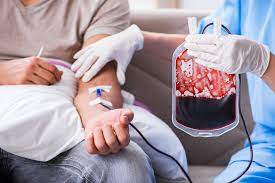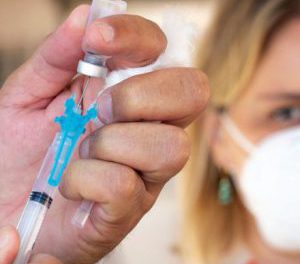According to a study published in the American Journal of Health-System Pharmacy on April 24, the U.S. spent more than $722 billion on prescription drugs in 2023, a 13.6% increase from 2022. This is the largest uptick in spending in 20 years.
Semaglutide (sold under brand names Ozempic, Wegovy, and Rybelsus) ranked No. 1 on the list of the top 25 most popular drugs by U.S. spending.
The U.S. shelled out $38.58 billion on these medications, which can run a person around $1,000 without insurance. Numerous factors — not just the sticker price of a drug — are likely driving the surge, according to the report and experts not affiliated with it.
Though semaglutide tops the list, medications that treat other conditions round out the top three. Those are Adalimumab (Humira) and Apixaban (Eliquis).
Adalimumab treats autoimmune disorders, such as rheumatoid arthritis and Crohn’s disease. Apixaban is used to prevent and and treat blood clots for certain patients and also to help protect people with some heart rhythm problems.
1. Semaglutide (Ozempic, Rybelsus, Wegovy): $38.58 billion
2. Adalimumab (Humira): $35.33 billion
3. Apixaban (Eliquis): $22.11 billion
4. Dulaglutide (Trulicity): $16.28 billion
5. Empagliflozin (Jardiance): $15.89 billion
6. Ustekinumab (Stelara): $15.87 billion
7. Pembrolizumab (Keytruda): $15.40 billion
8. Tirzepatide (Mounjaro, Zepbound): $13.16 billion
9. Bictegravir/emtricitabine/tenofovir alafenamide (Biktarvy): $13.15 billion
10. Dupilumab (Dupixent): $11.49 billion
11. Risankizumab (Skyrizi): $10.10 billion
12. Etanercept (Enbrel): $9.55 billion
13. Insulin glargine (Lantus, Toujeo, Basaglar): $8.89 billion
14. Rivaroxaban (Xarelto): $8.26 billion
15. Dapagliflozin (Farxiga): $7.90 billion
16. Immune globulin (antibodies to make the immune system stronger): $6.27 billion
17. Insulin aspart (NovoLog): $5.79 billion
18. Secukinumab (Cosentyx): $5.72 billion
19. Sitagliptin (Januvia): $5.72 billion
20. Fluticasone/umeclidinium bromide/vilanterol (Trelegy Ellipta): $5.71 billion
21. Nivolumab (Opdivo): $5.39 billion
22. Lisdexamfetamine (Vyvanse): $5.36 billion
23. Insulin lispro (Humalog): $5.32 billion
24. Ixekizumab (Taltz): $5.31 billion
25. Ocrelizumab (Ocrevus): $5.30 billion
Eric Tichy, Pharm.D., a pharmacist, author of the new study, and Mayo Clinic division chair, said the research turned up three primary reasons for the price increase:
Utilization (6.5% increase)
Utilization increases when a drug already approved for one use is approved for another. Experts believe this trend will likely continue in 2024, especially since semaglutide (Wegovy) received FDA approval for heart attack risk reduction in March.
“This expanded indication is likely to increase both the utilization of Wegovy and its coverage by insurance providers,” said Kimberly Posey, PhD, DNP, an associate professor and the director of graduate nursing at Texas Christian University. “Significantly, this change means that Wegovy will now be covered under Medicare Part D.”
Medicare does not cover drugs specifically used for weight loss, and KFF analysis suggested the new approval for semaglutide could expand Wegovy coverage eligibility to around 3.6 million people.
New drugs (4.2% increase)
The FDA approved 55 new drugs in 2023.
“Nearly half of [these drugs] were classified as first-in-class due to employing novel mechanisms of action to treat various medical conditions,” Jennifer Bourgeois, Pharm.D of SingleCare said. “Biologic drugs like adalimumab, or Humira, and gene therapies for cancer are costly to manufacture, contributing significantly to drug spending.”
For instance, in November 2023Trusted Source, Zepbound received FDA approval for weight management and loss. The generic form of Zepbound, tirzepatide, was the eighth-most popular drug by U.S. spending in 2023.
“Ongoing innovation in the pharmaceutical industry leads to the development and approval of new drugs, which often command higher prices due to extensive research and development,” said Joy Liu, the CEO and founder at Plenful, a tech company that regularly works with pharmacies.
Price increases (2.9% increase)
Drug prices ticked up by about 3% in 2023.
“This upward trend in drug prices contributes directly to the overall growth in prescription drug spending,” Bourgeois said.
Still, Tichy stressed it’s not the most significant factor in the increase in price spending.
“While prices did increase, we know that most patients have some form of insurance, and they are likely to be insulated from the price changes,” he said.
And, while it’s challenging to predict whether spending will decrease in coming years, Tichy says the cost to at least some consumers could fall. The 2022 Inflation Reduction Act included several provisions regarding prescription drug prices. Tichy highlights three:
- Removing the cost share for vaccines, meaning patients with Medicare Part D no longer have out-of-pocket costs for vaccines
- Limiting the monthly insulin expense to $35
- Limiting out-of-pocket patient responsibilities for all prescriptions under Medicare D
Additionally, the study indicates that Medicare’s ability to negotiate drug prices under the 2022 law will likely lower costs. Medicare will negotiate prices for 10 drugs that will take effect in 2026, and new ones will be added annually. These should reduce cost-related obstacles for patients and could drive increased use of prescription drugs.
Bourgeois said that demographic shifts could also be widening the need for prescription drugs as the U.S. population ages.
Sahily Paoline, the chief clinical officer at Xevant, agreed, saying the current state of prescription drug spending also “suggests a higher prevalence of chronic diseases that require ongoing medication management, such as diabetes and cardiovascular conditions.”
Bourgeois pointed to PEW Research published in 2024 indicating that 62 million people in the U.S. are 65 and older as a significant contributor to the use of prescription drugs for chronic conditions like heart disease, diabetes, and arthritis.
She also cited Merck data that about 80% of older adults take at least two prescription drugs regularly, and 36% take at least five prescription drugs.
“As this segment of the population continues to grow, the demand for prescription medications is expected to rise, leading to an overall increase in drug spending nationwide,” Bourgeois says.
Unlike, say, exercising to reduce heart disease risk, there’s not much people can do to lower the costs of prescription drugs. The heaviest burden falls on the government.
“To reduce drug prices, a key strategy is government regulation,” Posey said. “By enabling programs like Medicare to negotiate directly with pharmaceutical companies, significant purchasing power can be leveraged to secure more reasonable prices.”
Posey says the Inflation Reduction Act could serve as a model for future legislation. However, Paoline is pessimistic that significant change will happen in the short term.
“Progress in legislative efforts to rein in soaring drug prices faces resistance from pharmaceutical companies, who argue that high prices fuel innovation,” Paoline said. “Market forces, such as the constant influx of new expensive drugs and regular price hikes on existing medications, continue to increase spending.”
However, Wegovy prices fell in the first quarter of 2024, with experts pointing to increased competition.
“Heightened competition and expanded access could drive further decreases in anti-obesity drug prices,” Bourgeois says.
Yet, whether that trend continues remains a significant question mark.
“It’s a challenging question whether the competition among anti-obesity drugs will lead to significant reductions in out-of-pocket costs for consumers,” Posey said.
Shifting the approach from treating conditions to preventing them could also help decrease spending, something more in control of consumers and the providers caring for them.
“While medications are essential for many conditions, this [spending] trend also underscores the importance of integrating preventive healthcare practices to address underlying health issues and improve overall health outcomes,” Paoline said. “By balancing medical treatments with preventive strategies like healthy lifestyle changes, we can aim for a more holistic approach to healthcare.”
Prescription drug spending ballooned by nearly 14% from 2022 to 2023, the largest increase in the U.S. in two decades, per a new study.
Expanded utilization of drugs, 55 new FDA-approved medications, and a small (less than 3%) increase in drug prices are behind the trend.
Semaglutide, including Ozempic, topped the list of the top 25 most popular drugs by U.S. spending.
The U.S. population is also getting older when the risk of chronic conditions increases.
Experts say that the most significant way to reduce drug spending is through legislation and that the 2022 Inflation Reduction Act, which included prescription medicine stipulations, is a start.
Focusing on lifestyle changes and preventative care can also help reduce reliance on prescription drugs and associated spending.












